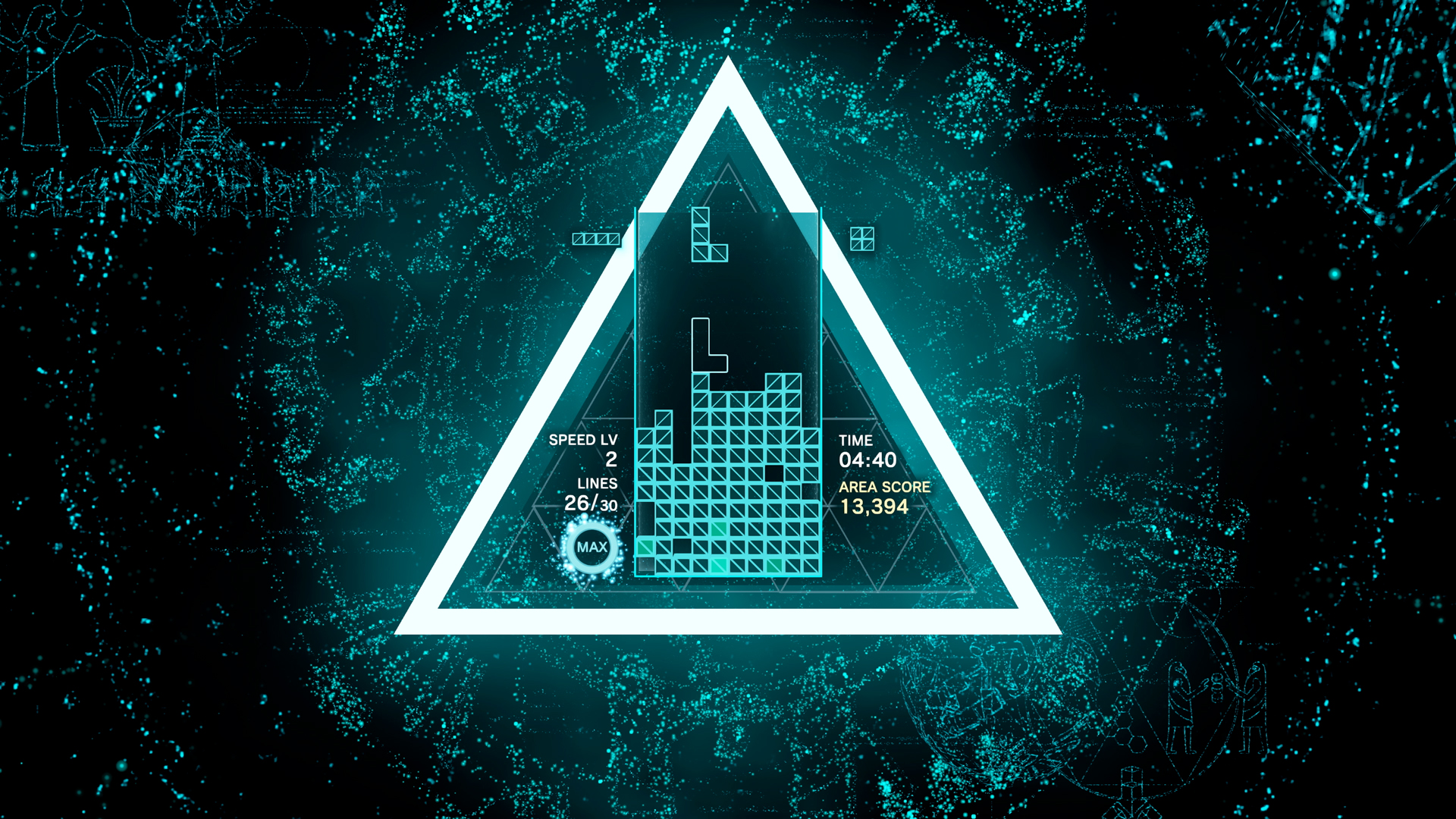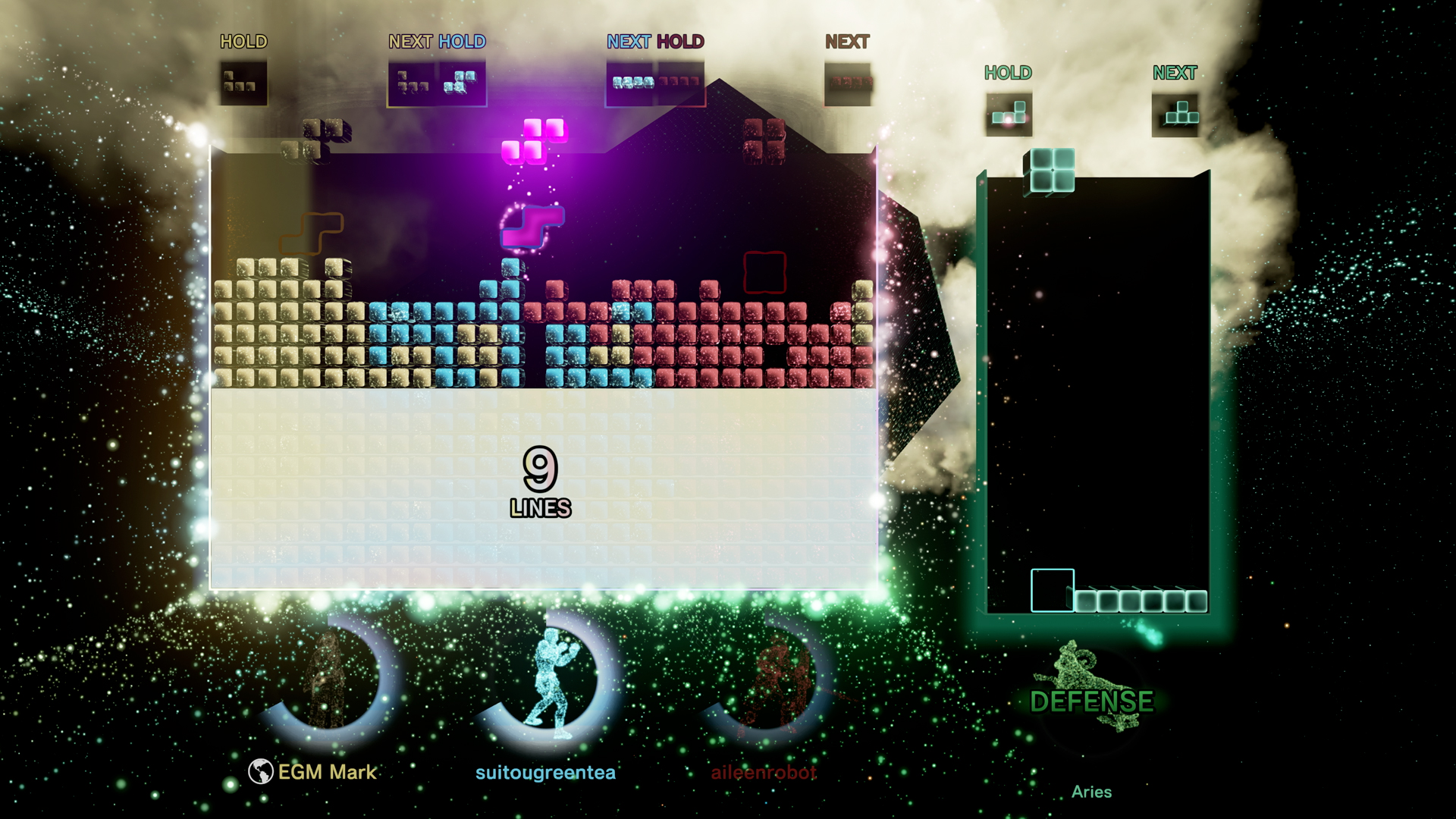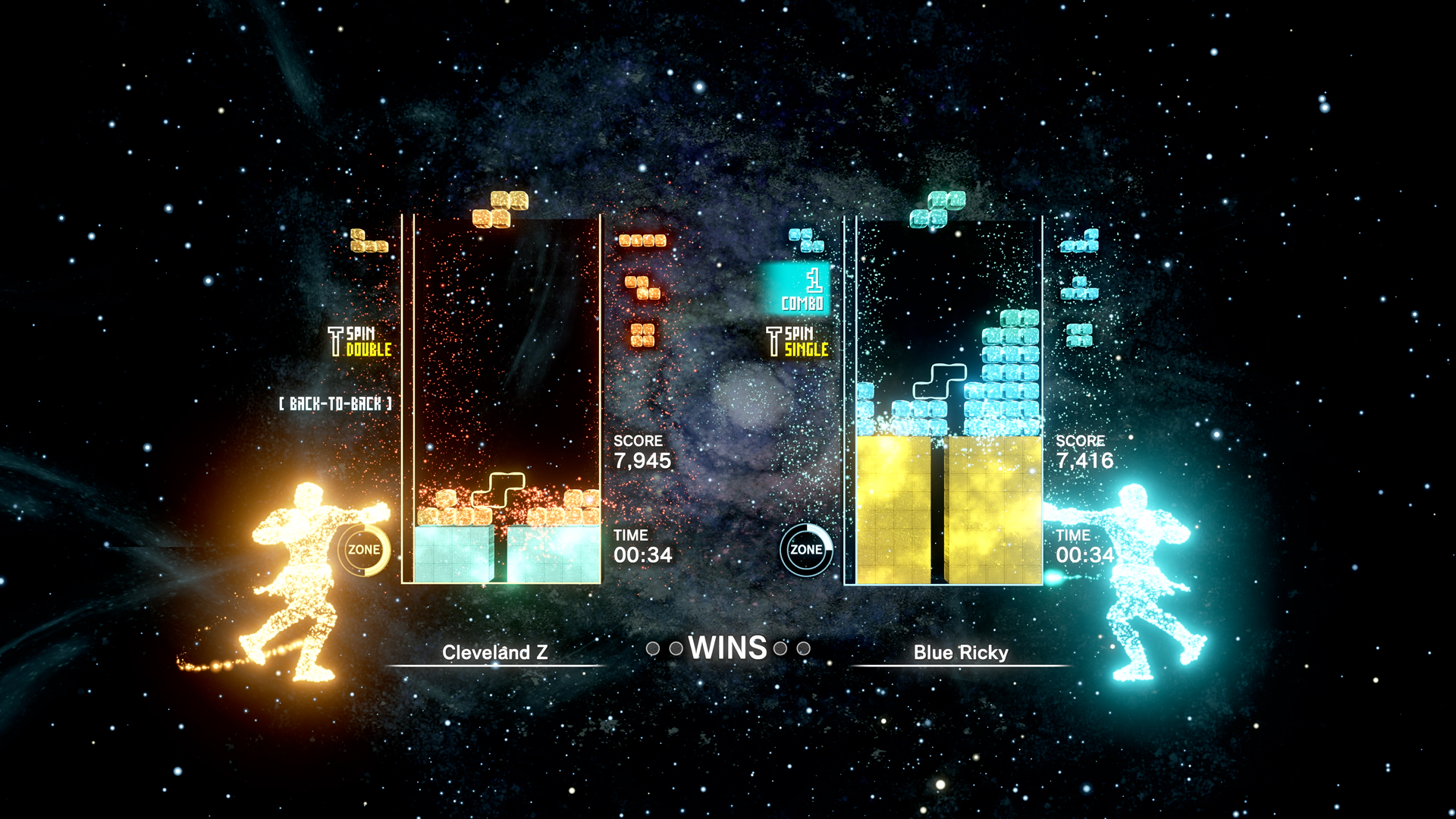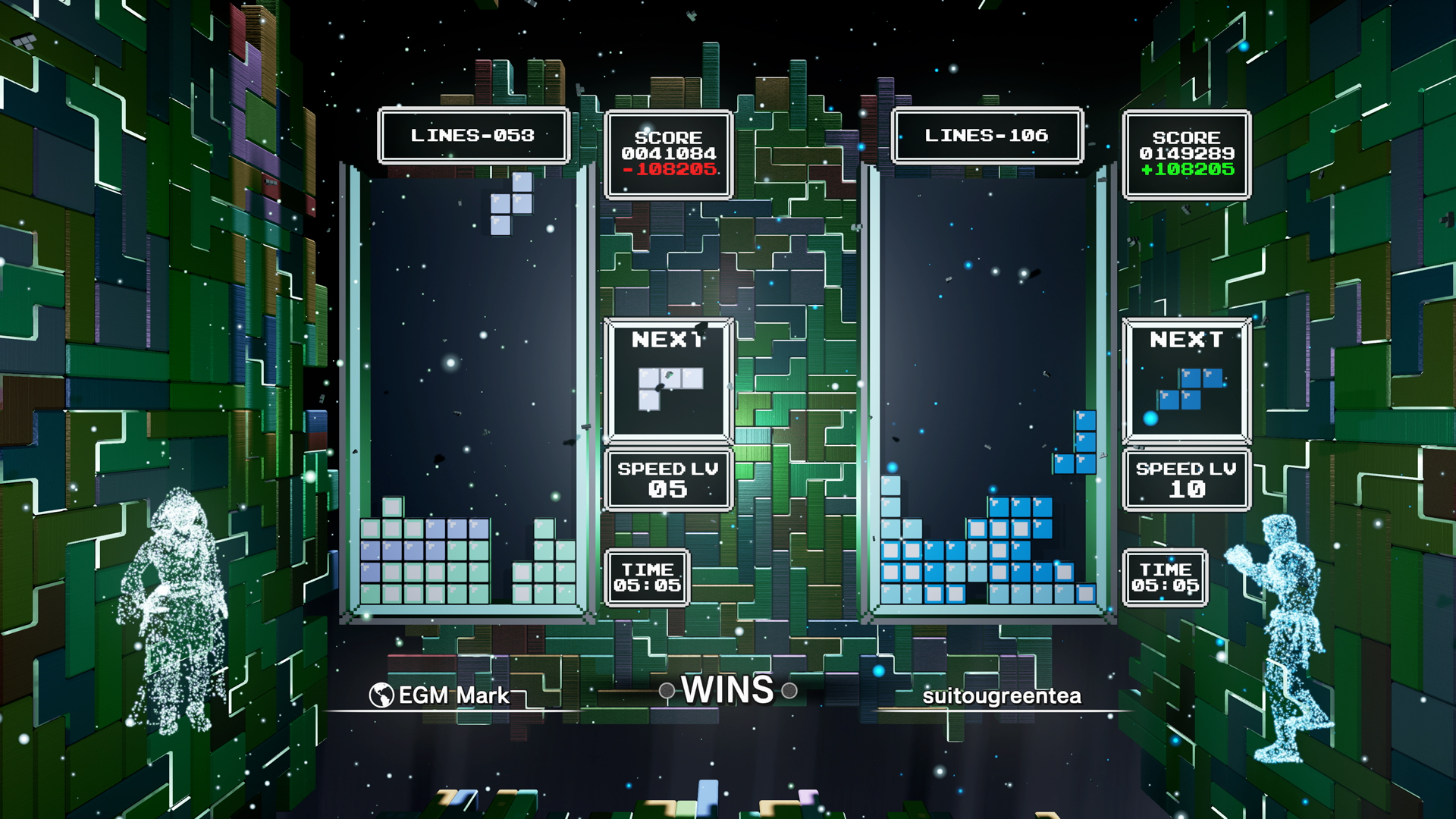
It's always the games at risk of slipping through the cracks that can come to define a launch window. With the original Xbox, Fusion Frenzy partied quietly in the shadow of the Master Chief's inaugural adventure. On Xbox One it was Peggle 2 that kept minds occupied once the veneer of Ryse: Son of Rome lost its shine. For PS4, it was Resogun that kept the DualShock lights on long after the scope of Killzone: Shadow Fall began to narrow. The most famous example is undoubtedly the Xbox 360 and Geometry Wars: Retro Evolved – the Xbox Live Arcade classic easily bridging the gap between launch day and the eventual release of The Elder Scrolls 4: Oblivion some four months later, and indeed beyond. In Tetris Effect: Connected, the Xbox Series X has found its Geometry Wars.
That is to say, in Tetris Effect: Connected the Xbox Series X has a game that is hypnotic in its ability to hold your attention and all-encompassing in its capacity to focus it. Something that is quick to load into and easy to back out from. A game that feels endlessly replayable should you need it to be, though it ultimately demands little more of your time than that which you're willing to sacrifice to the pursuit of leaderboard supremacy. Its new cooperatively-engineered multiplayer designed in such a way that you and a couple of buddies can explore the fringes of reality and escape the miasma of existence, together but apart. Bound to its rhythmic action by the thunderous score and kinetic visuals, enchanted by an experience as tight as time itself. As it was in 1984 is as it is still to this day: All hail the Tetriminos.
Slotting into place

"As much as we'd love to be, like, 'Oh, Infinite slipped? Alright, the must-have killer launch title, that's us!'" laughs producer Mark MacDonald, adding, "but we know we're not Halo..." And yet, as we settled in for a couple of hours of Xbox Series X multiplayer one evening last week, I honestly began to wonder whether MacDonald might be selling Tetris Effect: Connected a little short. I'm not audacious enough to suggest that Tetris Effect: Connected can occupy the space left by Halo Infinite, only that I can see it swallowing just as much of my time as 343's delayed adventure could have.
And you don't need to take my word for it either, as PS4 owners should be familiar with the pervasive power of Tetris Effect by now. The game launched on the console in 2018 as an unlikely exclusive; a reimagining of what is arguably the most popular puzzle game of all time – a reinvention that nobody asked for. It also happened to be outstanding, a truly wondrous work from the developers responsible for Lumines and Rez Infinite. That core game arrives on Xbox Series X and Xbox Series S on November 10 optimised but largely unchanged: Synchronicity as problem-solving splashed across no fewer than 30 single-player stages, all set to a shimmering, evolving beat.

"We want to come in as the Geometry Wars or the Resogun, the one that you keep on playing"
Mark MacDonald, producer
What this next-generation release comes equipped with, however, is a multiplayer expansion that doesn't so much change the game but enhance it. There's a low-stakes 'Score Attack' mode, which lets two players compete separately to see who can get the high score – purpose-built to bait super chill score chasers. There's a 'Classic Score Attack' variant which conforms closer to 'Pro' Tetris rules and takes a lot of inspiration from the original incarnation of the game (which is to say, it's real tough). There's Zone Battle, where you and another player go directly head-to-head for high scores. What's surprising is that there's something quietly calming to the competitive nature of it. You race to build increasingly perilous structures before sending them crashing into the ether with one perfectly placed piece, sure, but it's strangely relaxing all the same.
There's even a cooperative mode that doesn't make all that much sense on paper, 'Connected', where you and two other friends collaborate to battle one AI boss, but it works brilliantly in practice. Once a week, in what the studio calls a full moon event, a real-player – should they have real big Tetriminos – can even take the place of the AI and go up against three other players simultaneously. I've been dipping in and out of Teris Effect: Connected multiplayer all week and am I good at it? No, not at all. But do I care all that much? Not really, no. It's proven to be a welcomed way to end my day. Everybody enters into multiplayer lobbies muted as standard, there's a very light emote system that is easily ignored, and then you play. You just play. It's as simple as that. I don't know about you, but simple is what I need right now.
Game Pass comes into focus

Enhance Games considered adding a multiplayer mode in for Tetris Effect the first time around. Instead of stretching itself too thin, it decided to drop Battle Tetris from its plans and focused on making the best single-player experience that it could. "We said, let's focus on making this a single-player escape oasis," says MacDonald, before ruefully adding, "because the world sucked in 2018 and it's almost comical to say that now. But that was a big thing then. To be able to say to people, 'hey, you can escape this terrible world for a few minutes'. I laugh, hearing myself say that to people in 2018 because holy shit. Now we need this more than ever."
Sign up to the GamesRadar+ Newsletter
Weekly digests, tales from the communities you love, and more
It was Tetris Effect's Zone system, coming together in the last eight months of development back in 2018, that gave the team inspiration for how it could make multiplayer work – and differentiate it from other Tetris battle systems, such as those found in Puyo Puyo Tetris. But it was Microsoft and the appeal of Game Pass that has made it possible here in 2020. "Game Pass was a really important part of this for us," MacDonald continues, "because we're going to have a player base. We couldn't do a big matchmaking game without a big player base and Game Pass guarantees us a big player base from day one."
"That's why it made sense to launch this with Microsoft. I'm a huge fan of Game Pass, as a gamer. But for us with a multiplayer game, it's huge. Most multiplayer games love going into Game Pass because they have microtransactions or want to sell you DLC, we have none of those plans. We just want a shit ton of people playing it, because the more people that are playing it the better the matchmaking is going to be. No matter how good or bad you might be, the more people you can find that are close to your skill level the better it will be."

"We couldn't do a big matchmaking game without a big player base, and Game Pass guarantees us a big player base from day one"
Mark MacDonald, producer
Game Pass doesn't just bring a big player base, it also ensures that the game is more readily available. Were Tetris Effect: Connected to launch at $40 for Xbox Series X and Series S it would be the wrong shape to fill that Geometry Wars sized gap. Retro Evolved wasn't just this moreish experience that a generation of players couldn't put down, it also had a small price and install size. That was integral to its success. And in a sense, the same will be said of Tetris Effect: Connected too.
Xbox Game Pass subscribers won't need to commit to a purchase, only a download. The studio is still putting the finishing touches on the game, but it believes Tetris Effect: Connected will come in under 6GB. That ensures that it will be quick to install, something you can play while you wait for other, much larger games from your backwards compatible library to install. It has a small footprint too, making it hyper-fast to load into games – instant, even, should you be loading into it as part of Quick Resume. And, of course, thanks to Game Pass there could be millions of other players there waiting to play with you from day one. Piece all of that together and Tetris Effect: Connected starts to look like the modern-incarnation of Geometry Wars. A game that you'll be able to dive in and out of without hesitation, whenever you feel the urge to surrender your senses to another dimension.
Tetris Effect: Connected will launch on Xbox Series X, Xbox Series S, and PC on November 10. It supports cross-platform multiplayer and will also be available through Game Pass.

Josh West is the Editor-in-Chief of GamesRadar+. He has over 15 years experience in online and print journalism, and holds a BA (Hons) in Journalism and Feature Writing. Prior to starting his current position, Josh has served as GR+'s Features Editor and Deputy Editor of games™ magazine, and has freelanced for numerous publications including 3D Artist, Edge magazine, iCreate, Metal Hammer, Play, Retro Gamer, and SFX. Additionally, he has appeared on the BBC and ITV to provide expert comment, written for Scholastic books, edited a book for Hachette, and worked as the Assistant Producer of the Future Games Show. In his spare time, Josh likes to play bass guitar and video games. Years ago, he was in a few movies and TV shows that you've definitely seen but will never be able to spot him in.


